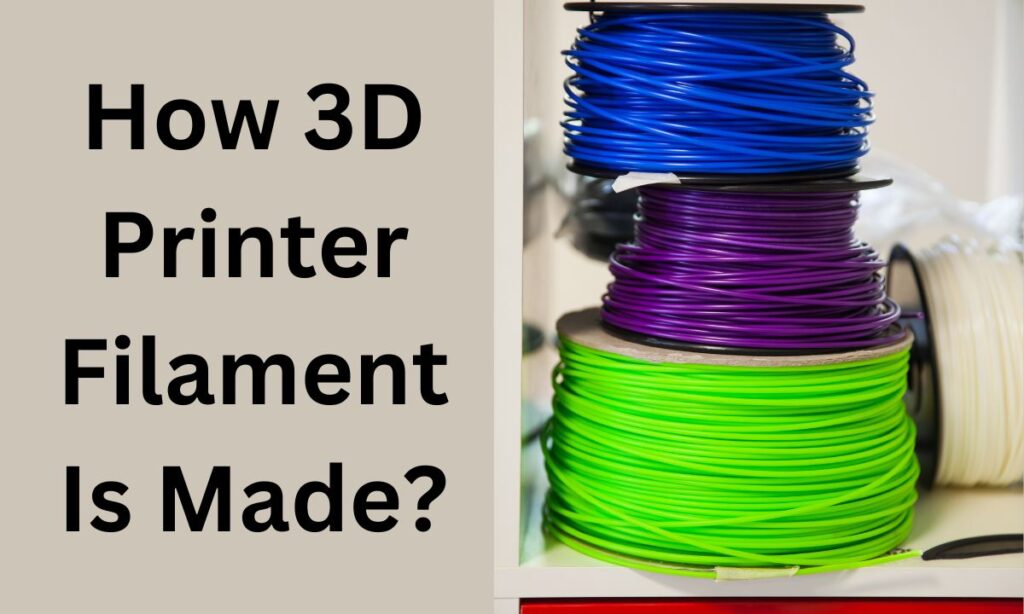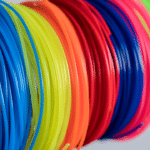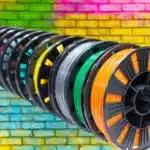
Have you ever wondered how 3D printer filament is made? If you’re interested in 3D printing, understanding the process behind filament production can help you choose the right materials and appreciate the quality differences between brands. The good news is that the filament-making process is fascinating but quite straightforward. Let’s take a closer look and debunk some myths along the way.
Understanding the Basics of Filament Production
How Is 3D Printer Filament Made?
Affiliate Disclosure
We participate in Amazon affiliate programs, earning fees from qualifying purchases via links at no extra cost to you. It’s how we keep this blog rolling and my 3D printers buzzing with fresh filament for reviews like this one!
It’s a common question for many in the 3D printing community. Knowing how filament is created can help you understand the differences in filament quality, material options, and even pricing. 3D printer filament is manufactured through an extrusion process that transforms plastic pellets into a continuous, precise strand of filament. Although it sounds complicated, the process is mostly automated and standardized, ensuring quality and consistency.
Why Filament Quality Matters
Good-quality filament is essential for smooth printing, strong layer adhesion, and high-quality results. Poorly made filament can lead to clogs, weak prints, and layer separation. Fortunately, reputable manufacturers adhere to strict production standards, ensuring that the filament you buy is ready to produce high-quality prints.
The Filament Manufacturing Process Explained
Step 1: Preparing Raw Materials
The process begins with raw plastic pellets, typically made from PLA, ABS, PETG, or other polymers used in 3D printing. These plastic pellets are chosen for their unique properties, like strength, flexibility, and temperature resistance. Sometimes, pigments and other additives are mixed in to give the filament its color or specific qualities, like added flexibility or improved UV resistance.
- Sorting and Mixing: Plastic pellets are sorted and, if needed, combined with colorants or other additives. This mixing process must be thorough to ensure the entire batch has a consistent composition.
- Heating and Melting: The plastic pellets are then heated to their melting point, typically between 200-260°C, depending on the type of plastic. At this temperature, the plastic becomes molten and ready for extrusion.
Step 2: Extruding the Filament
Once the plastic reaches the right consistency, it’s ready for extrusion. This is where the molten plastic is pushed through a precisely sized nozzle to form a long, continuous strand of filament. During this process:
- Extrusion Control: The nozzle size and extrusion speed are carefully calibrated to ensure the filament’s diameter is consistent, typically either 1.75mm or 2.85mm.
- Cooling the Filament: After extrusion, the hot filament is cooled rapidly in a water bath. This helps the filament retain its shape and solidify without warping, ensuring that it stays consistent and round.
Step 3: Quality Control and Winding
Quality control is crucial at this stage to ensure the filament meets industry standards for diameter consistency, roundness, and smoothness.
- Diameter and Tolerance Testing: Precision lasers measure the filament’s diameter to ensure it remains within tight tolerances, usually +/- 0.05mm. Variations can cause printing issues like uneven layers or clogging.
- Spooling and Packaging: Once the filament passes all quality checks, it is wound onto spools, ensuring no tangles or kinks. It’s then vacuum-sealed with desiccant to protect it from moisture, which can degrade print quality.
Why Consistency and Quality Control Matter
Inconsistent filament can cause failed prints, clogs, and other frustrations. Reliable filament manufacturers ensure that their product adheres to strict standards, resulting in filament that performs well in any 3D printer. Cheap or poorly produced filament may have diameter variations, bubbles, or contamination that can lead to poor prints or printer issues.
FAQs About 3D Printer Filament Production
What is 3D printer filament made from?
Filament is made from thermoplastic polymers, such as PLA, ABS, and PETG, chosen for their printability and mechanical properties.
Why does filament diameter matter?
Consistent filament diameter ensures smooth extrusion and helps prevent clogs, improving print quality and reliability.
How are different filament colors made?
Colorants and pigments are added to the raw plastic pellets before melting and extrusion, creating a consistent color throughout the filament.
Can filament be made from recycled materials?
Yes, some manufacturers use recycled plastic to make filament, but this can sometimes affect quality and consistency.
What happens if filament absorbs moisture?
Filament that absorbs moisture may create steam bubbles during printing, causing poor layer adhesion and surface defects.
Conclusion
Understanding how 3D printer filament is made helps you appreciate the importance of quality and consistency. Filament production may seem complex, but it’s a well-regulated process that ensures you get reliable material for smooth, high-quality prints. By choosing reputable brands, you can feel confident in the quality of your filament and focus on enjoying your 3D printing experience.












